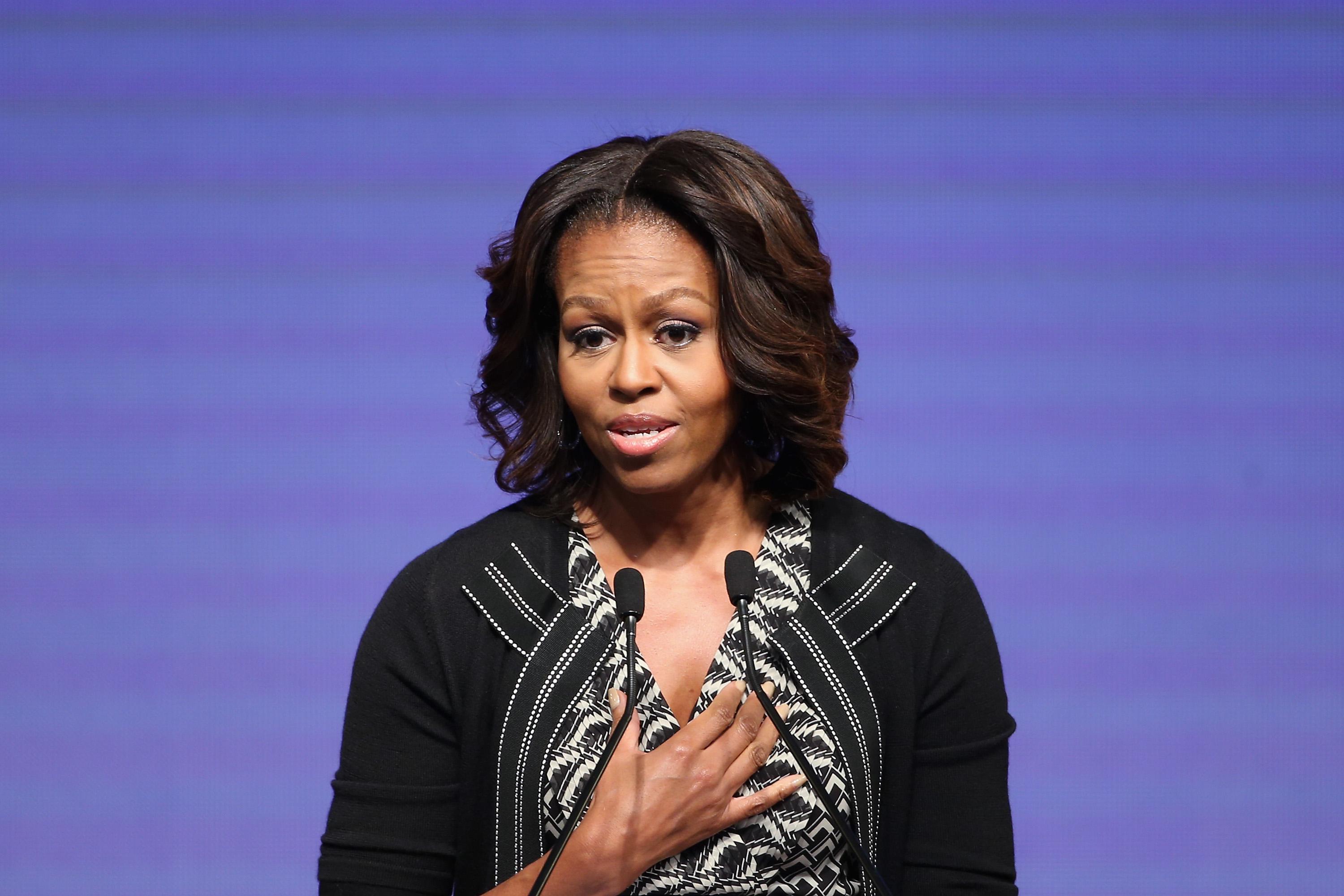There is a long, sad piece in the New Republic by Reid Cherlin, a White House assistant press secretary turned Brooklyn writer, about “how the East Wing shrank Michelle Obama.” It begins with a promise: The 2010 midterm elections are winding down, and Obama hires a visionary communications director, Kristina Schake, to help her “do more.” Obama has already spearheaded the Let’s Move project and Joining Forces, an initiative to help veterans assimilate back into regular life. Yet critics are grumbling that she has not “[used] her historical position to move more deeply into policy.” They are unnerved by her self-identification as “mom-in-chief,” which they feel diminishes her. So Schake comes in to remake Obama in the mold of a female politician, rather than a First Lady.
It does not go well. Or it does at first: Obama has a string of successful appearances with celebrities like Jimmy Fallon and Dwyane Wade, and she begins to carve out space on the issue of higher education.* But Schake runs up against the East Wing’s cramped, clannish culture and, two years later, gets replaced by “an executive from Estee Lauder.” Cherlin implies that, in safer hands, the First Lady’s fortunes as a political figure may suffer.
The story paints Obama as a perfectionist and careful, which, we are told, manifests in a lot of office chilliness. Obama holds her staffers to astronomical standards but sharply restricts their access to her. Her inner circle—dedicated to “competence and conflict-avoidance over grand vision”—is peopled by old friends, while the outer rings compete for attention. It all seems narrow and miserable, especially so when contrasted with pre-White House Obama. Cherlin closes with this bright image of her on the 2008 campaign trail.
Just a few days before her speech in Madison, Mrs. Obama headlined a rally in the old music hall in downtown Cincinnati. As an itinerant campaign staffer assigned to the event, I watched from the back of the hall and was struck by the palpable force of her argument. She talked for an hour about race and inequality in frank, critical terms…There was no one else on the national scene who could tell a story like that and have it mean so much.
What happened to that unguarded, magnetic powerhouse? Cherlin mentions the flack Obama got for speaking her mind four years ago (“For the first time in my adult lifetime, I’m really proud of my country”), but ultimately decides that “Michelle Obama has always been cautious.” And the faint tone of blame there—as if the First Lady were sloughing off her responsibility to take a stand, rather than acknowledging her responsibility to be the President’s wife—puts this piece in a recognizable genre. It is another “Whatever Happened to Michelle Obama?” story.
In November, Politico declared Obama a “feminist nightmare” because she was more focused on helping her daughters adjust to life in the White House than on shaping policy debate. But as my colleague Amanda Marcotte smartly wrote in response, “It’s good for feminism that Obama refuses to try to prop up some illusion that the first lady is a real career.” Before the Politico piece was Rebecca Traister’s mournful essay on the “momification of Michelle Obama,” in which she argued that Michelle Obama’s success in fact embodied what Geraldine Brooks has called a “depressingly retrograde narrative of stifling gender roles and frustrating trade-offs.” Though Traister doesn’t blame Obama for retreating into her husband’s shadow (and, fwiw, I’m not convinced she has: Her poll numbers, at least, are higher than his), the piece stubbornly details every last educational and professional milestone. It expounds on Obama’s accomplishments, charisma, independence, grit, and physical beauty. Traister writes that Michelle might be happy “playing second fiddle” to her husband, but the subtext is clear: What a waste.
I can understand the sadness of watching a high-powered, independent lawyer put aside her career to raise her kids, support her husband, and mother the entire country for a few years. It doesn’t help that Obama has been swept into office at a time when fresh ideas about gender equality in marriage are making her role seem archaic. But the First Lady owes her current lot in life (a pretty good one) less to her XX chromosomes than to the fact that tens of millions of Americans have elected her spouse leader of the free world. She can’t pursue completely independent projects in part because her job is to “add value” to the presidency and in part because Dad is legit too busy to help the kids with their homework. We may wince to see a strong, accomplished woman surrender her identity to a man’s, especially as many of us aspire to something more equitable in our own relationships, but the First Lady’s situation is unique. Who knows what will happen when Barack’s term ends, and the Obamas return to the private sector?
The real problem is not Michelle Obama. It is, as Cherlin writes, that we want the office of First Lady to “reflect the role of modern women as equal participants in the political process.” That sounds lovely, but what does it mean, in practice? That Michelle Obama must both craft policy and sign beautiful cream-colored stationary for visiting dignitaries? That the traditional and unavoidable responsibilities of FLOTUS-dom must suddenly disappear? Don’t forget: Michelle’s husband has to do a lot of ceremonial crap too, and that’s not because he’s a man. In the end, it seems to me that what’s happened to Michelle Obama is not that she’s had to shrink herself. It’s that she’s had to stretch to be too many different women, all at once.
*Correction, March 26, 2014: This post originally misspelled Dwyane Wade’s first name.
